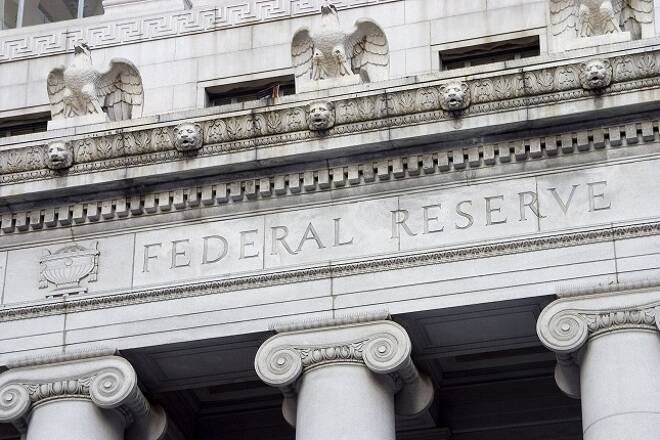Advertisement
Advertisement
EUR/USD Daily Technical Analysis for March 22, 2018
By:
The EUR/USD moved higher in the wake of the Fed’s monetary policy decision which increased the Fed funds rate by 25-basis points. While the move was
The EUR/USD moved higher in the wake of the Fed’s monetary policy decision which increased the Fed funds rate by 25-basis points. While the move was widely expected, the Fed’s forecast that rates would increased 2-more times in 2018, they did increase rates for 2019 and 2020. The Fed Chair pointed to the range of forecasts which are scattered, witch was likely less hawkish than expected.
Technicals
The EUR/USD rebounded sharply but remained inside the prior days trading range. Prices are testing resistance near the 10-day moving average at 1.2323. A break of this level would lead to a test of the February highs at 1.2505. Momentum is neutral as the MACD (moving average convergence divergence) histogram prints near the zero-index level with a flat trajectory which reflects consolidation.
Tec
The Fed Appears to Be on Course for More Rate Hikes
The Federal Reserve increased the Fed Funds rate on Wednesday by 25-basis points to a range between 1.50% and 1.75%, as widely expected. The fed increased its growth prospects for the U.S. economy, but railed to increase their forecast for rate hikes during 2018. Currently, the average interest rate incorporates 2-more 25-basis point increased during the balance of 2018. The Fed on average did increase its forecast for 2019 and 2020. Inflation remains an issue, as the Fed is concerned that inflation remains subdued despite economic and jobs growth.
New Fed Chair Jerome Powell in his first meeting approved the widely expected 25-basis points rate increase that puts the new benchmark funds rate at a target of 1.5 percent to 1.75 percent. It was the sixth rate hike since the policymaking Federal Open Market Committee began raising rates off near-zero in December 2015.
Along with the increase came another upgrade in the Fed’s economic forecast, and a hint that the path of rate hikes could be more aggressive. The market currently expects three hikes for 2018, and that remained the baseline forecast, but at least one more increase was added in the following two years.
Inflation expectations were changed little. The 2018 forecast remains just 1.9% for both core and headline. For 2019, the forecast for core personal consumption expenditures edged higher to 2.1% from 2%, while headline remained at 2%. The benign inflation expectations are particularly remarkable considering that Fed officials now see unemployment running even lower than before.
The U.S. current account gap widened
The U.S. current account gap widened to a larger than expected $128.2 billion, following small offsetting revisions that left gaps of $101.5 which was $100.6 billion in Q3 and $123.7 billion in Q2. The gyration reflected the expected Q4 surge in imports of goods and services that widened the deficit, but with a big deterioration in the balance on secondary income alongside another quarter of big primary income gains for both exports and imports. The current account gap is more generally widening into 2018 after moving sideways since 2016, though the gap should remain well below the $215.8 billion all-time high in Q3 of 2006.
German advisers lift growth forecast
German advisers lift growth forecast. The government’s council of economic advisers has lifted the growth forecast for this year to 2.3% from 2.2% expected previously, but are expecting a decelerating to 1.8% in 2019. The council warns that growth above capacity continues to increase and that the shortage of manpower is likely to have a negative impact on the expansion. At the same time risks to global growth have increased, according to the report, which said “a spiral of protectionist measures” would have “significant negative effects on the global and the German economy”. Still, against the background of a strong economy and higher inflation the economists say that the ECB’s exit from an “extremely expansive” monetary policy is “overdue”.
UK labor data showed an unexpected lift in average earnings, which rose 2.8% year over year in the three months to January, up from 2.7% year over year in the month prior. The median forecast had been for a 2.6% outcome, and with CPI having ebbed to 2.7% it shows the real pay erosion of the last year has finally abated. The unemployment rate also unexpected dipped back to 4.3%, from 4.4%.
About the Author
David Beckerauthor
David Becker focuses his attention on various consulting and portfolio management activities at Fortuity LLC, where he currently provides oversight for a multimillion-dollar portfolio consisting of commodities, debt, equities, real estate, and more.
Advertisement
